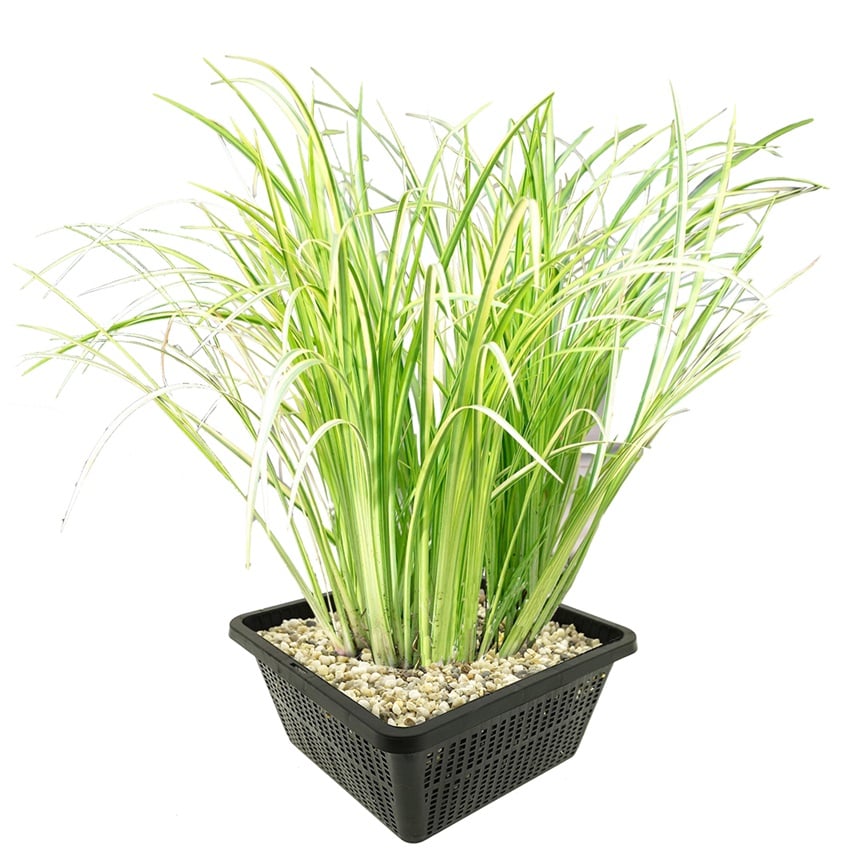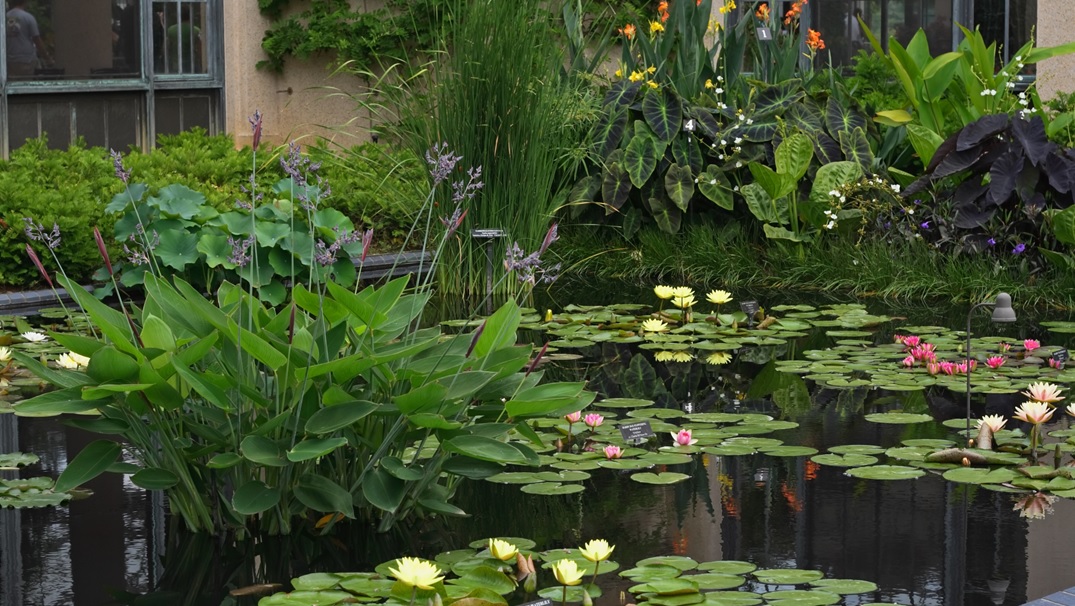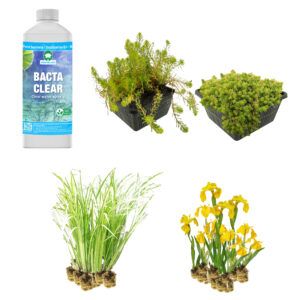Calamus
Calamus
Calamus (Acorus calamus) is a hardy, native plant , characterized by its oblong, sword-shaped leaves and an inflorescence resembling a spike. Calamus reaches an average height of 60 to 100 cm. The roots stabilize the pond bottom and the leaves provide shelter for small aquatic animals and insects. In addition, the plant contributes to improved water quality by absorbing nutrients and pollutants.

For Sumpfpflanzen , I recommend a minimum of 1 basket with 4 plants and a maximum of 4 baskets with 16 plants per m3 (1000 gallons of water). The amount needed depends on how quickly you want the pond balanced and your visual requirements.
Planting calamus
Pied Calamus - 4 pieces - Acorus Calamus Variegatus
- Aquatic plant
- Full-grown height: 80 cm
- Placement: -1 to -20 cm
Pied calamus - 30 pieces - Acorus Calamus Variegatus
- Aquatic plant
- Full-grown height: 80 cm
- Placement: -1 to -20 cm
Frequently asked questions about Calamus

Calamus is a popular marsh plant often used in ponds because of its ornamental appearance and easy care. This aquatic plant, also known as Acorus calamus, has long, narrow leaves on which small flowers grow in spring when the plant is in bloom.
The Acorus plays a role in the natural filtration of water. By absorbing excess nutrients from the water, this plant helps reduce algae and provide clearer water.
Calamus, also known as Acorus calamus, grows naturally in moist environments such as marshes, river banks and along the edges of lakes and ponds. Originally from Asia, the aquatic plant is now found in many parts of the world, including Europe, North America and parts of Africa. Calamus can be planted in both sun and partial shade and needs moist soil to grow.
Calamus is a strong aquatic plant that can survive the winter and grow up to 80 centimeters tall! You can plant it at a depth of up to 20 centimeters below the water surface. Be sure not to plant the calamus deeper as it will not grow as well.
For an area of 1m², we recommend using at least 1 basket, containing 4 Acorus plants. Depending on how quickly you want the pond or water feature to balance, and depending on your own preference, you can choose up to 4 baskets per 1m².
What is calamus?
Acorus calamus
One of the benefits of adding calamus to a pond is that it helps filter the water. The roots of the plant absorb nutrients from the water, which helps to improve water quality and thus water parameters and reduce algae growth. The calamus is a marsh plant which means it does best in shallow water, plant the calamus for this reason no deeper than 20 centimeters. Because if the pond plant is submerged, it will not grow as well. Besides its functional properties, calamus is also a beautiful addition to any kind of pond. Calamus is traditionally used for medicinal purposes and is a part of Ayurvedic and traditional Chinese medicine. Furthermore, it is said to work against stomach problems and stimulate appetite. However, it is important to emphasize that not all of the plant's properties have been scientifically substantiated.









